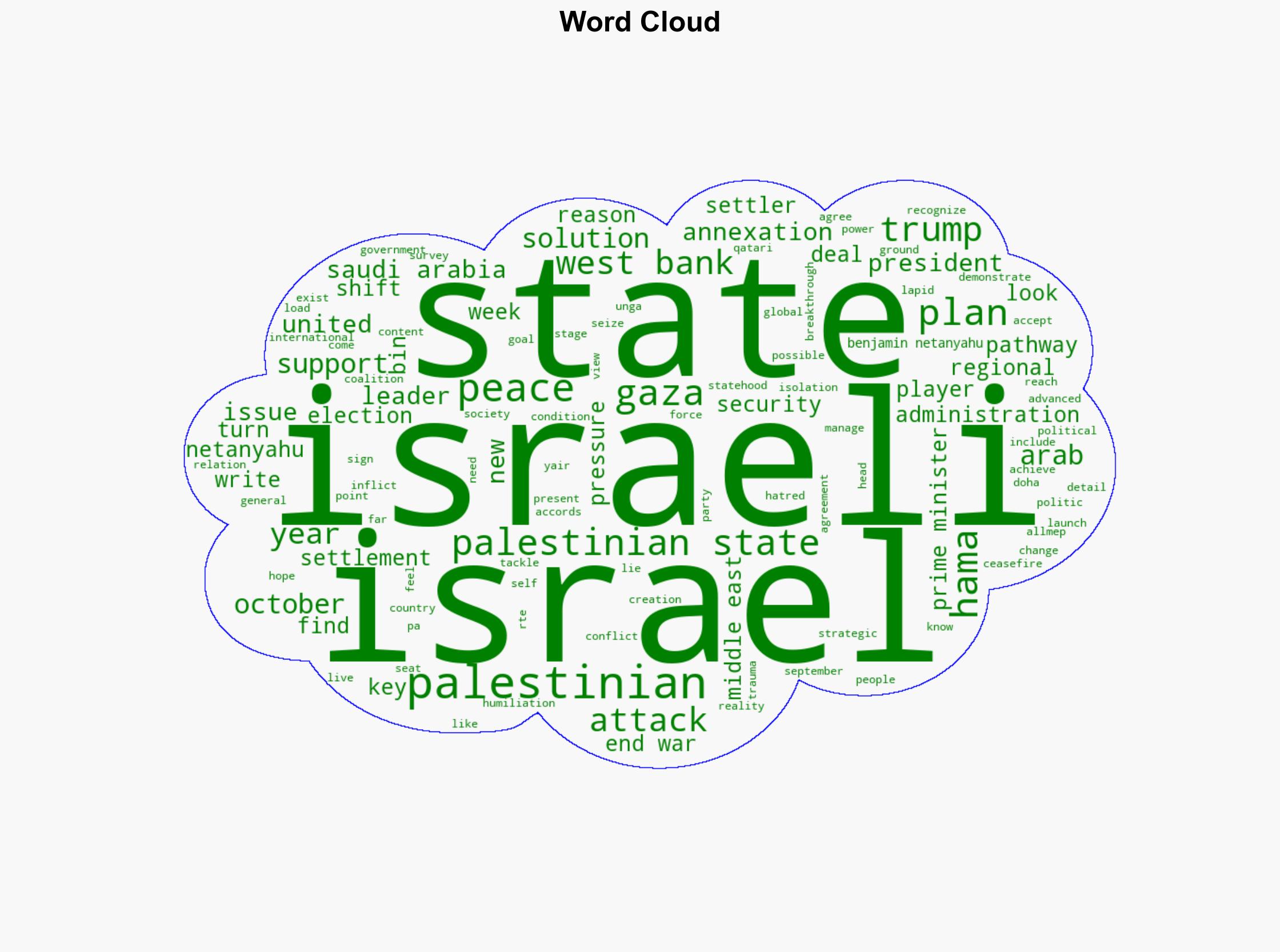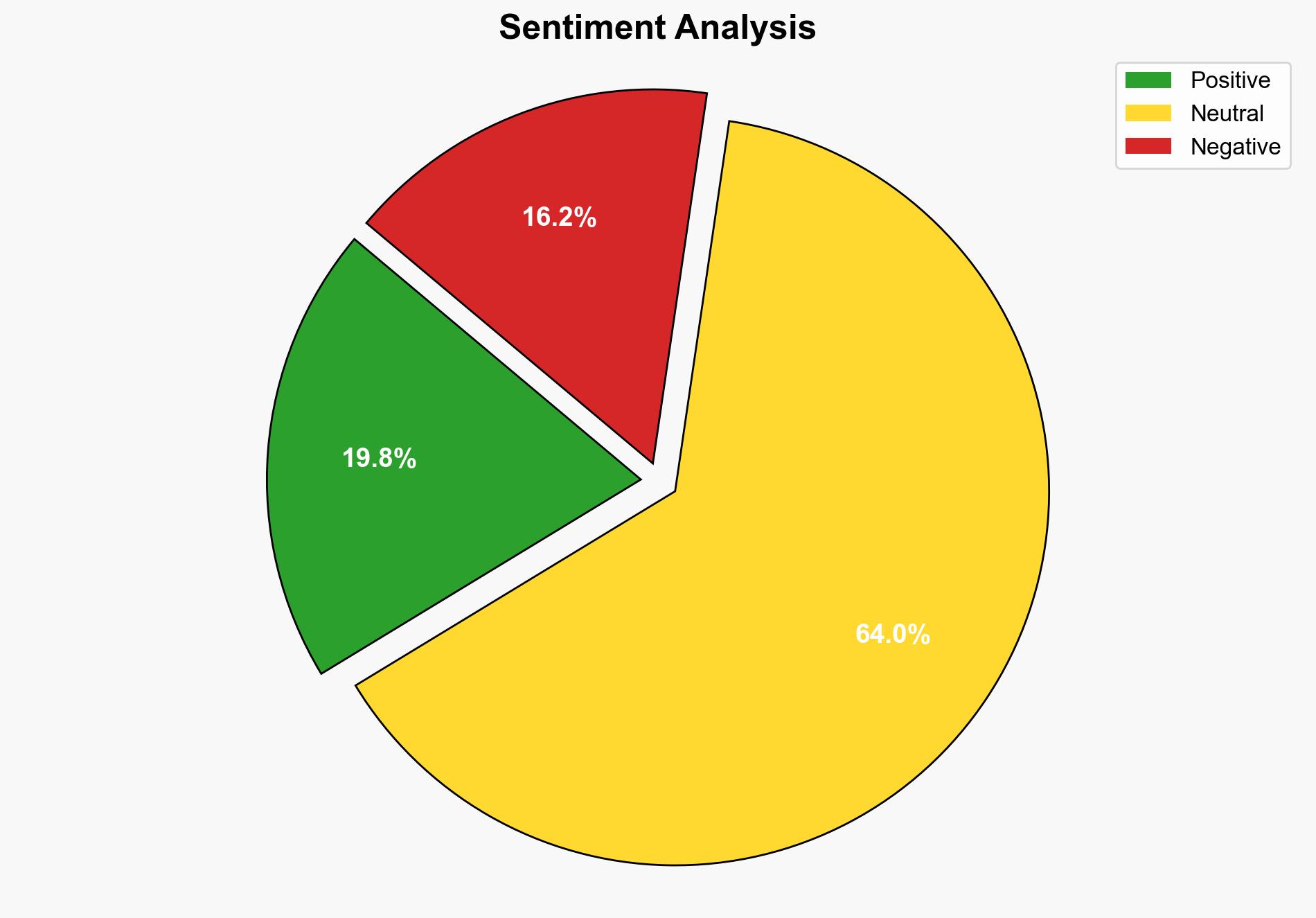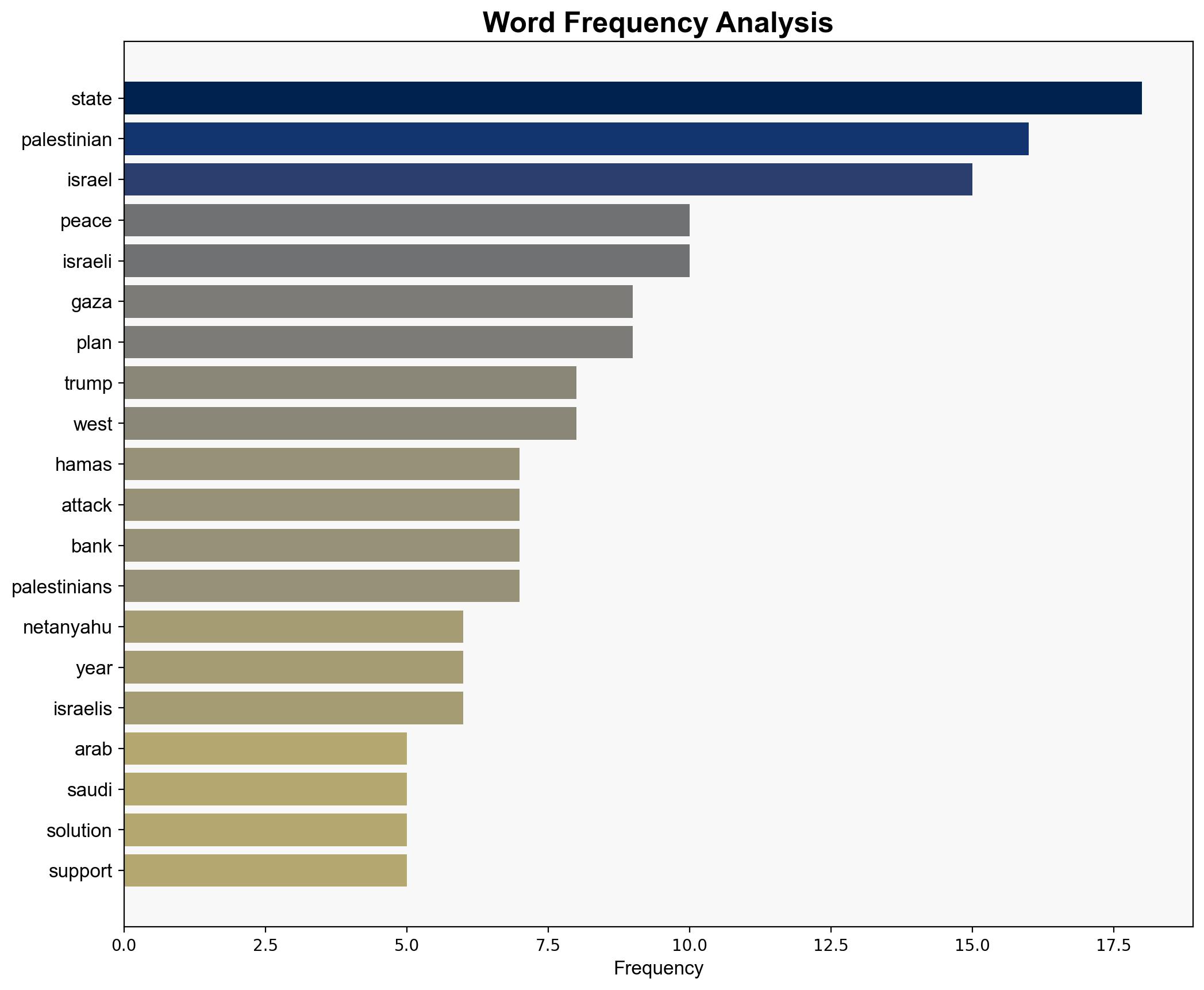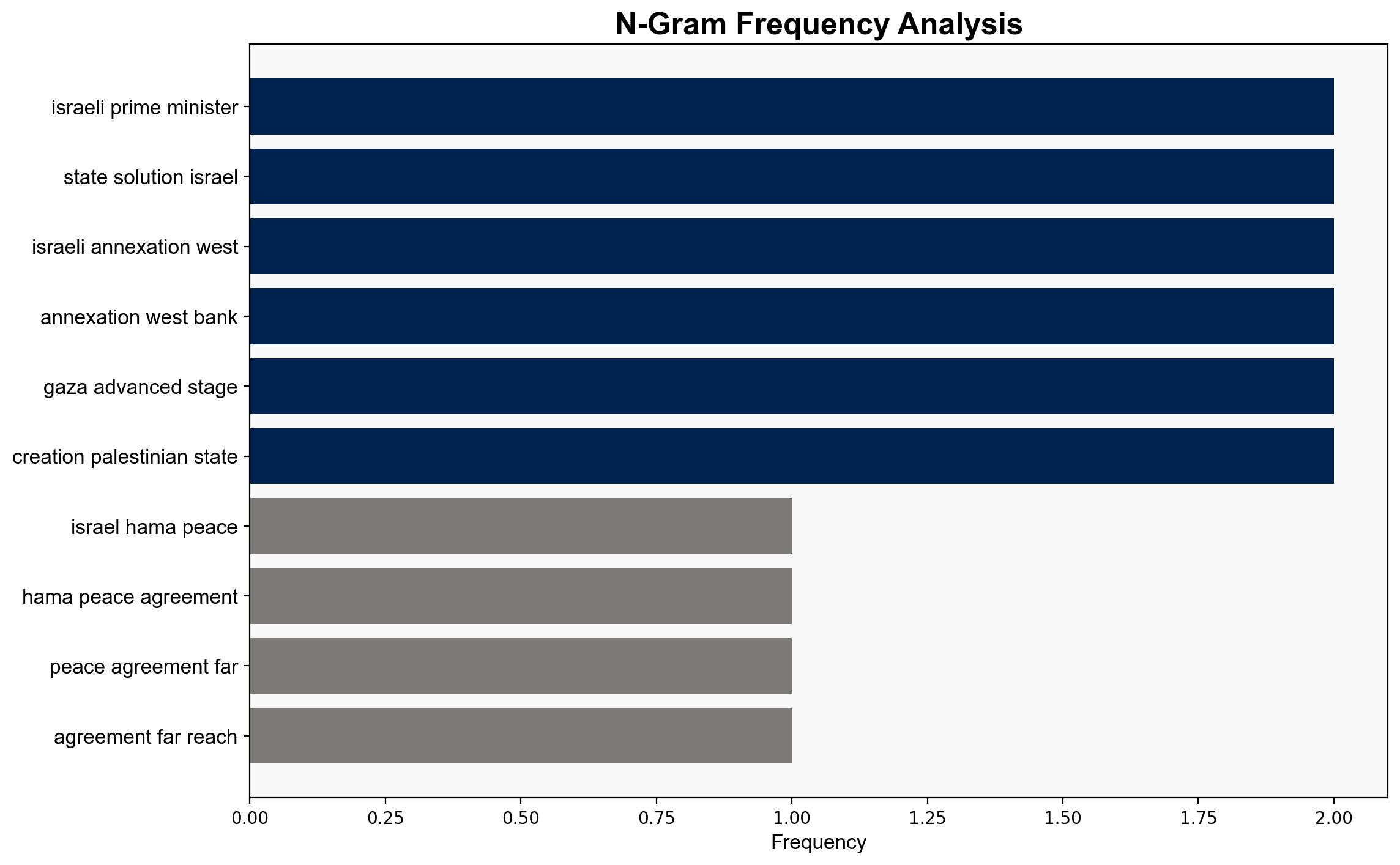Long-term peace in Middle East requires tenacious effort – RTE
Published on: 2025-10-09
Intelligence Report: Long-term peace in Middle East requires tenacious effort – RTE
1. BLUF (Bottom Line Up Front)
The most supported hypothesis suggests that a peace agreement in the Middle East is contingent upon external pressure and strategic concessions from key players, particularly Israel and Hamas. Confidence in this hypothesis is moderate due to the complex interplay of regional dynamics and historical grievances. It is recommended to pursue diplomatic engagement with regional and global stakeholders to facilitate dialogue and reduce tensions.
2. Competing Hypotheses
Hypothesis 1: A sustainable peace agreement is achievable through external pressure and strategic concessions from Israel and Hamas, facilitated by international actors like the United States and regional powers.
Hypothesis 2: Long-term peace remains elusive due to entrenched hostilities, regional power struggles, and internal political dynamics within Israel and Palestinian territories, making any agreement temporary at best.
Using Bayesian Scenario Modeling, Hypothesis 1 is slightly more supported due to recent international diplomatic efforts and pressure from the United States, despite historical failures.
3. Key Assumptions and Red Flags
Assumptions:
– External pressure can effectively influence Israeli and Hamas decision-making.
– Regional powers are willing to support a peace initiative.
Red Flags:
– Historical failures of similar peace plans.
– Potential for internal political changes in Israel and Palestinian territories to derail progress.
– Lack of trust between parties.
4. Implications and Strategic Risks
The potential for a peace agreement could stabilize the region, reducing the risk of conflict spillover. However, failure to achieve peace could lead to increased violence, economic instability, and humanitarian crises. The geopolitical landscape could shift, affecting alliances and power balances, particularly if external actors like the United States alter their involvement.
5. Recommendations and Outlook
- Engage in multilateral diplomacy to build consensus among regional powers and international stakeholders.
- Encourage confidence-building measures between Israel and Hamas to foster trust.
- Scenario Projections:
- Best Case: Successful peace agreement leading to regional stability and economic growth.
- Worst Case: Breakdown of negotiations resulting in renewed conflict and humanitarian crises.
- Most Likely: Continued diplomatic efforts with intermittent escalations and temporary ceasefires.
6. Key Individuals and Entities
– Benjamin Netanyahu
– Donald Trump
– Mohammed bin Abdulrahman bin Jassim Al Thani
– Joe Biden
– Hamas
– Palestinian Authority
7. Thematic Tags
national security threats, regional focus, diplomacy, conflict resolution





